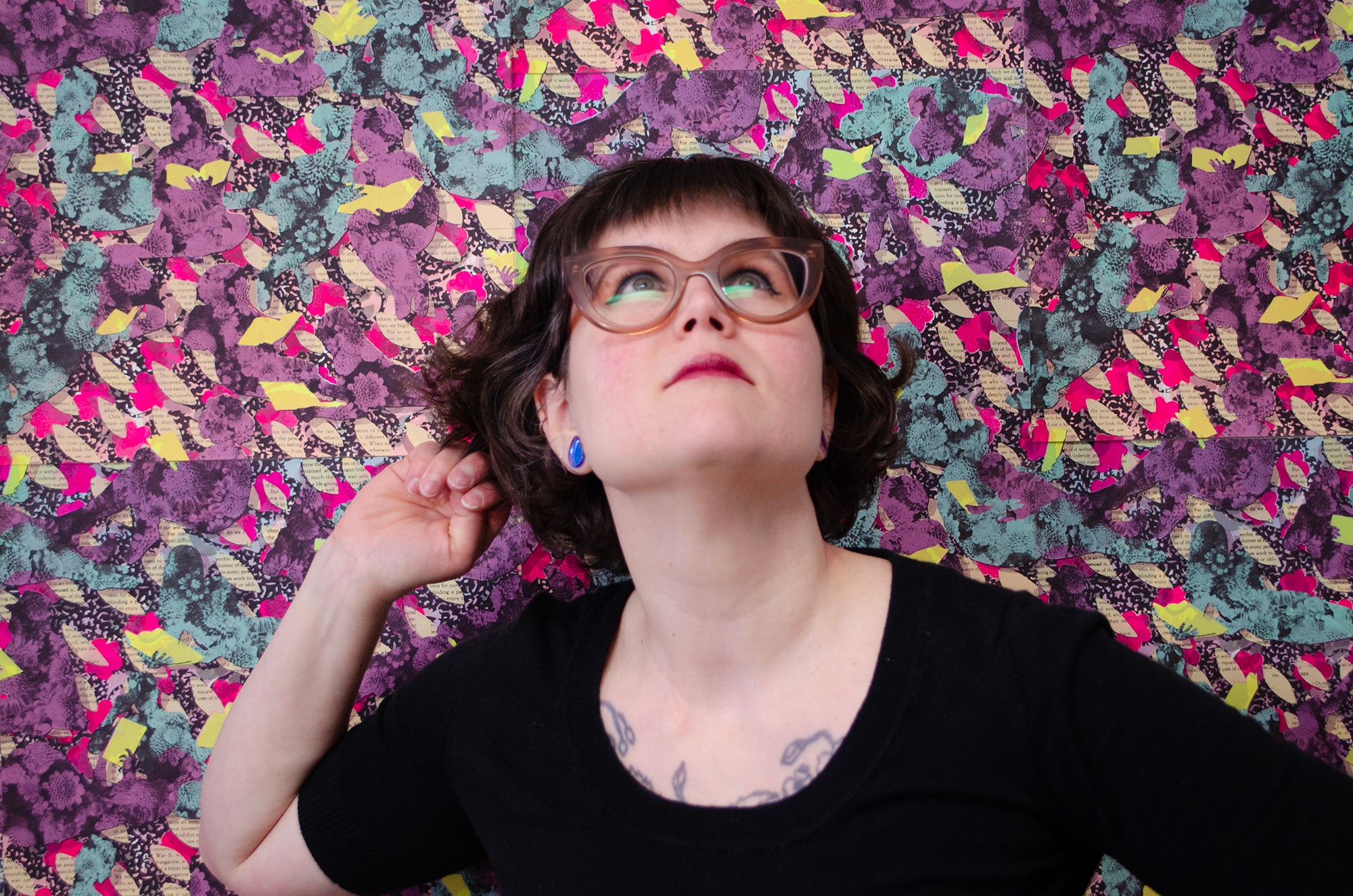We caught up with the brilliant and insightful Elizabeth Castaldo a few weeks ago and have shared our conversation below.
Elizabeth, thanks for taking the time to share your stories with us today Can you talk to us about how you learned to do what you do?
One of my favorite aspects of being an artist is the continuous process of learning how to make the work and experimentation with new ideas, materials and techniques. I am a very do it yourself type of person so if I want to make something that I’ve never made before I am probably going to try to learn how to do it myself. Oftentimes new ideas are sparked through the learning process as well, so it ends up being even more generative. I’ve always loved the process of making and process is a big part of my work, which often begins with a lose idea, which is further developed through a generative push and pull process of responding to whats on the paper.
I take a lot of pleasure in honing my craft and skill. I have a background in printmaking and book arts and learning these processes really solidified the fact that the more you practice, the better you will get at the craft. These practices are very central to my artistic practice even though I make mixed media work. I tend to make very intricate drawing and cut paper collage work that is heavily layered, all sensibilities that I further developed through practicing printmaking and honing my skills in those techniques. I take a lot of satisfaction in creating the matrix, whether that be carving a linoleum block, etching a plate or creating transparencies for silkscreen, even typesetting for letterpress printing. This is a part of the work that is often not seen by the viewer of the final work. These integral materials either stay with the maker, are disassembled, reclaimed, or even destroyed once the printing is finished. The constant regeneration in printmaking has also become an important aspect of my mixed media work where I am constantly cannibalizing pieces of other work I have made, and bits of paper I have collected, even reusing printing plates and silkscreen transparencies in new ways to create my mixed media works.
I just finished a two month long residency at Women’s Studio Workshop where I focused on silkscreen process, which is one of my favorite mediums. I wanted to figure out how to apply a more generative and spontaneous approach to silkscreen, during the very act of printing, which has always, for me, been a more planned and pre-determined practice once getting into the printshop. Silkscreen is already basically a stencil process, so I thought, what if I stencil the stencil? I created a library of patterns and dozens of transparencies, that I exposed onto the entire screen. Then I cut stencils from paper that I would stick to the printing surface of the screen, then during the printing process those patterns would be printed through stencil. I approached it as a collage process, responding to what I had printed on the paper previously, slowly refining shapes and figures as I layered up, working on several prints at once, all of them unique. It was a fun way to experiment with layering pattern and color, playing with negative and positive space, and foreground and background. There was also the challenge of developing a new way to work with the silkscreen process, to figure out and a way to generate many different variations relatively quickly. I was working with 9 different stencils, each has two components, the inner figure shape and the outer negative space, and I made about 60 unique prints.
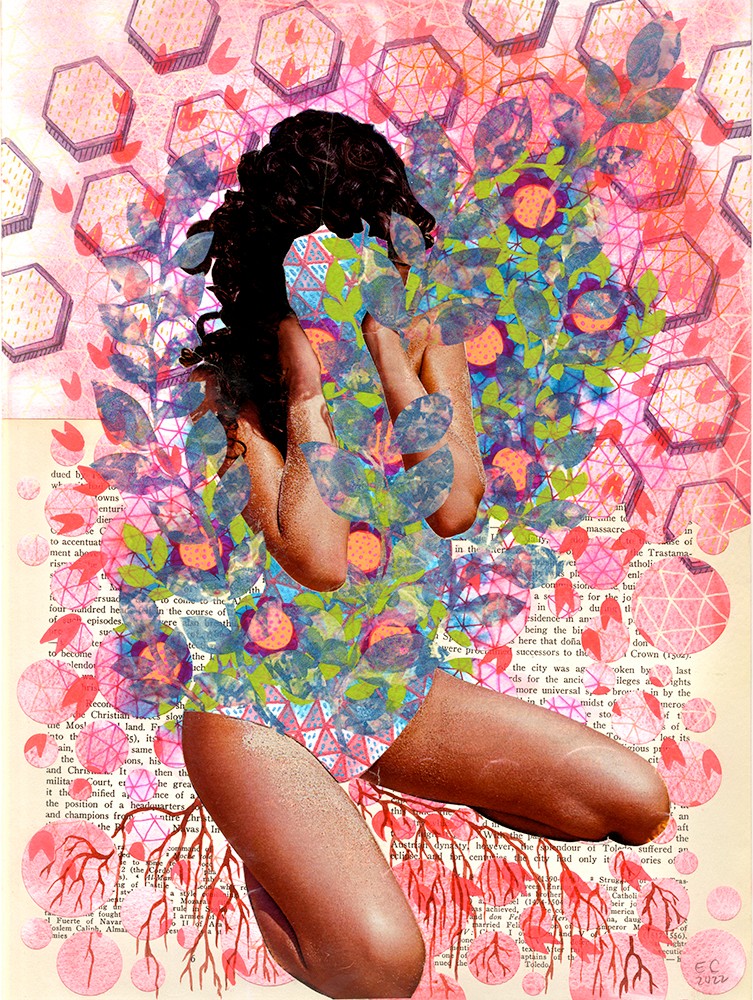


Great, appreciate you sharing that with us. Before we ask you to share more of your insights, can you take a moment to introduce yourself and how you got to where you are today to our readers.
I am an artist living and working in Peekskill NY and New York City. Most kids like making art, but for me it really stuck. Since I liked drawing so much, my mom enrolled me in kids art classes offered by a local artist where I learned drawing fundamentals first using graphite and later pastel. After a couple years I was taking the adult classes and I continued to take these classes until I graduated from High School. I was lucky to go to public schools that had a great art program and incredible art teachers that really fostered my creativity and encouraged me in a very meaningful way. I excelled in other subjects but I couldn’t imagine doing anything else besides making art. It just felt like the right thing for me. I went to the School of Visual Arts where I majored in Fine Art with a focus on drawing and printmaking. I later got my MFA in Printmaking from the Savannah College of Art and Design.
My work is process driven and generative. I enjoy pushing pattern and layering to the limits, creating multi-layered and visually abundant works on paper and artists books. I am a printmaker by training but most of my work is made with mixed media. Working with mixed media allows me to create richly layered surfaces that reflect printmaking theory and technique but utilize paint, drawing materials and collage, as well as printmaking processes such as silkscreen, relief printing and letterpress. I enjoy the focused practice of creating intricately hand cut paper and repetitive patterning using paint and drawing materials as well as the digital/analogue relationship involved with printmaking. Central to the aesthetics of my work is the haptic quality of layered materials and technique that manifest as I strive to intertwine figures and environment.
When making my work, I consider what it feels like to be in a female body, the boundaries of my body against other bodies and my surroundings. As part of my practice I am attempting to reclaim sensuality and sexuality as a mother living under hetero-patriarchal capitalism. I see the struggles of women as intertwined with the struggle to end extractive and destructive practices that harm the earth and all living things. In life and art I seek ways to center healing from these harms and explore the desire to nurture the self and others as a source of power. This land-body entanglement is something I continue to learn about and explore through my work.
Through the collage process, I cut into the body, making incisions and extractions, and then I go back and fill the voids of these violent incisions. Making the body anew, enmeshing them into their world, and building abundance back into the body.
I use a lot of pattern as well, exploring pattern as abundance, and exploring the body as a site of action, including the radical acts of finding ease, rest and pleasure, countering the idea that these things are somehow frivolous, excessive and unproductive.
Pattern has been a way of accumulating mass, making something big out of something small. Generating abundance in a world of manufactured scarcity. By covering the surface in pattern, I am emphasizing the interconnectedness of all things and attempting to create transformation through repetition in which the body(ies) and environment become one. Through this process, I explore building abundance within the body as a representation of joy, pleasure, and sensuality.
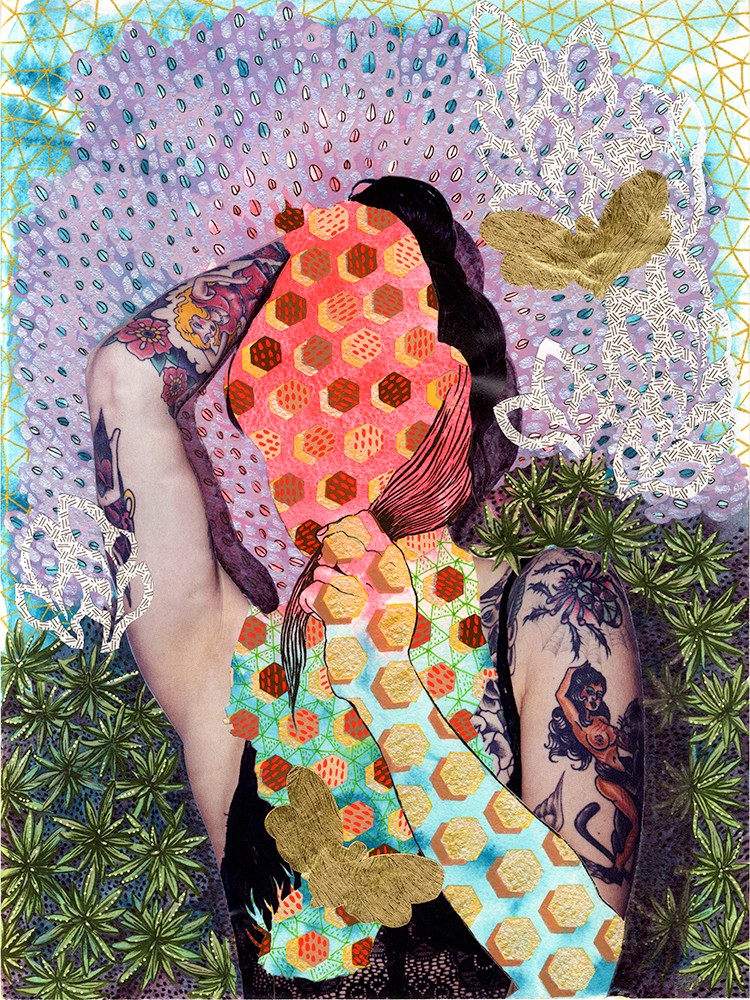
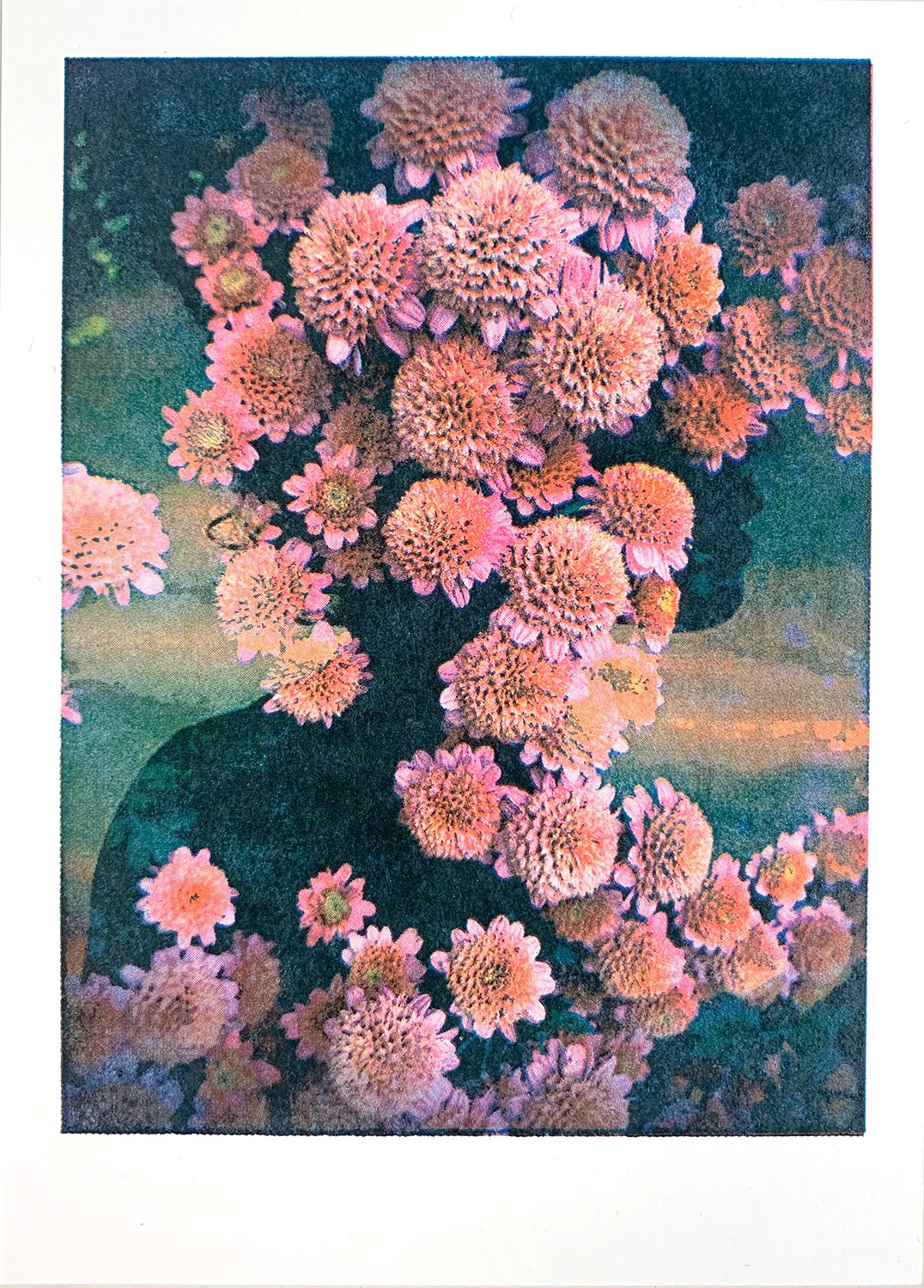
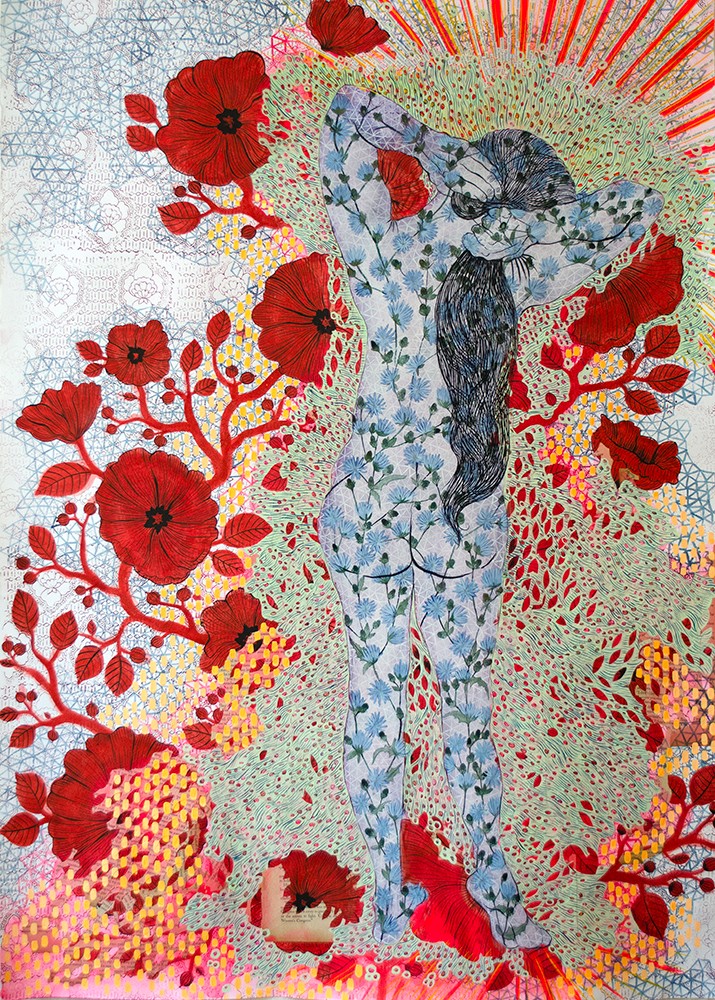
Any resources you can share with us that might be helpful to other creatives?
My arts education was great in that I was lucky enough to have open minded instructors who encouraged experimentation early on. However, being an artist was so often framed as just working alone in your studio. I knew it wouldn’t be quite that simple because I would need to have some sort of regular job to support myself and I knew this would always be in conflict with finding the time to make work. I quickly realized I wasn’t prepared for so many aspects of being an artist once I was out of school, besides making the work, and that was also a challenge. For instance, in the pre-social media world in which I was starting out, just making art in my bedroom after work, how was I supposed to let others know what I was making, let alone get my work into shows? I didn’t even know about applying for grants, juried exhibitions, what residencies were all about, or how to get studio space. Going to graduate school helped me fill in some of the gaps in terms of professional practices. I’ve also found help in books, from art practice podcasts and social media accounts. I think striking a balance between the studio practice, networking, applications and business maintenance aspects of an artistic practice are challenging no matter what, but I do wish these things were seriously addressed from the start in art school. It would have started me off with much better footing.
Besides all of these aspects of professional practice I think it’s really important to have a network built on friendship and mutual support, rather than feeling like one is in competition with other artists. I have found the most important resource to be my community of friends, fellow artists and art workers. I am lucky enough to have several other artist friends who actively uplift one another’s work, provide feedback to each other, and collaborate on opportunities to show our work when possible.

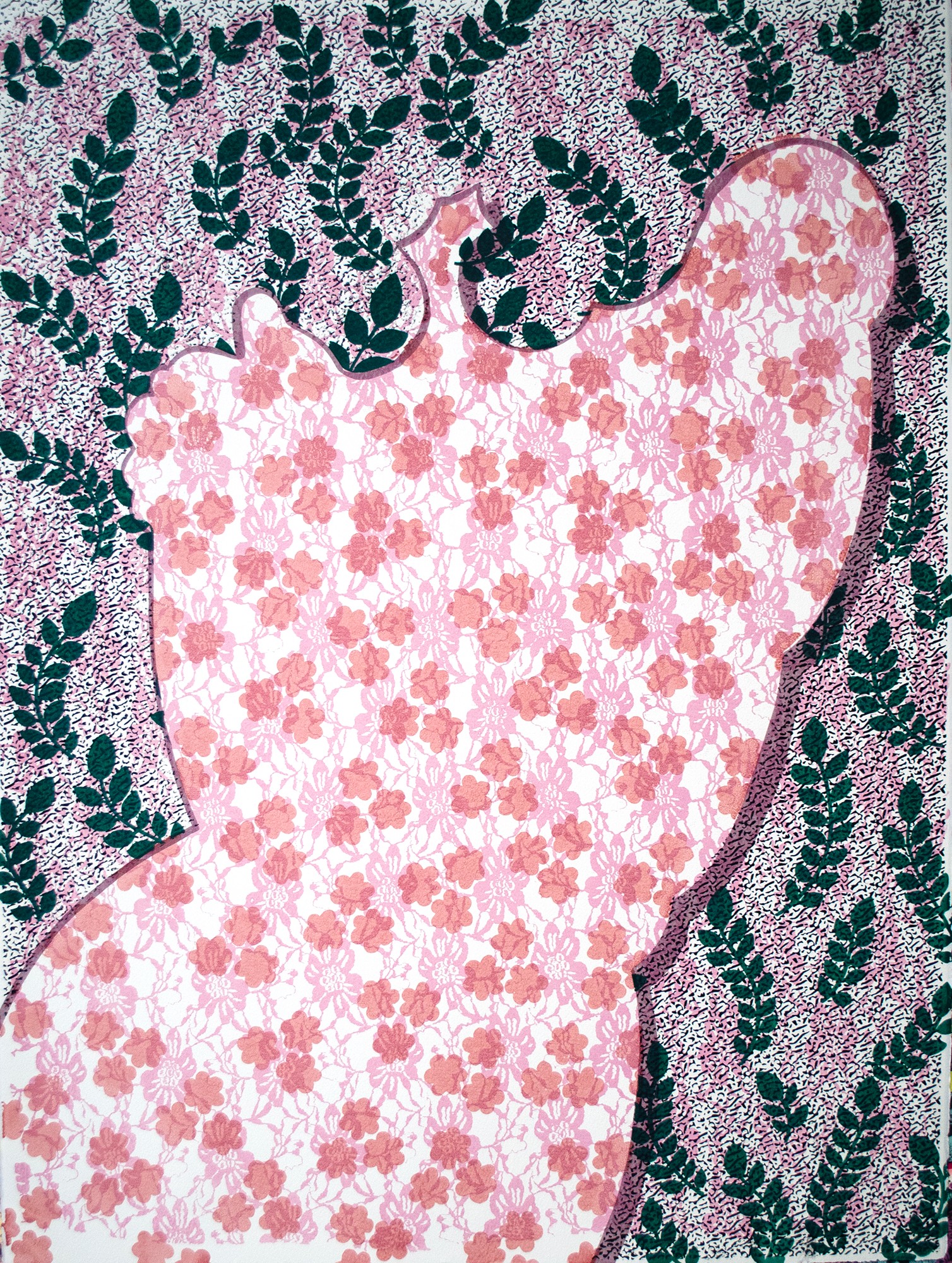

What can society do to ensure an environment that’s helpful to artists and creatives?
I wish art and artists were more valued and appreciated in society in general. Unfortunately in our capitalist society the arts have been devalued as something that doesn’t generate a lot of monetary wealth. Art is often written off as not career worthy early in life and not worth pursuing. Most people will not become professional artists, but it’s a mistake to dismiss the value of creativity. Making art and doing creative activities helps us learn problem solving, it helps us learn things about ourselves, each other and the world around us. It’s a great communication tool.
The arts are something that governments should invest in, whether that be through funding arts programming in public schools, art museums, public art projects, or directly funding the work of individual artists. Art is all around us, we are constantly interacting with things made by artists and creative practitioners. There also seems to be a misconception that because artists are doing what they love, we don’t need to get paid fairly for the work that we do. There is no other profession in the world where it is normal to work for free. If you like an artist’s work, buy it if you can, commission new work, hire them if they offer design services and if you can’t, share their work with others. This support means a lot!
The arts have immense cultural value with the ability to help viewers reflect on difficult topics or new ideas and make their own meaning. Art can be an aid in communicating ideas, it evokes emotion, creates connection and fosters understanding. It is for these reasons that at times throughout history free artistic expression has also been seen as a danger and threat to dominant ideology and fascist governments, which results in censorship. This only underscores the power of artistic expression and the importance of supporting the arts unconditionally. In today’s world where understanding and compassion are often lacking and it is a struggle to find commonality amongst people with differing worldviews and experiences, I think art has the power to help us begin to understand each other with empathy and compassion.
Contact Info:
- Website: www.elizabethcastaldo.com
- Instagram: @ecastaldo_artandbooks
- Youtube: https://www.youtube.com/channel/UCvvtZ4PLvmxf7PX1a9OhcEQ
Image Credits
Photos by Elizabeth Castaldo


